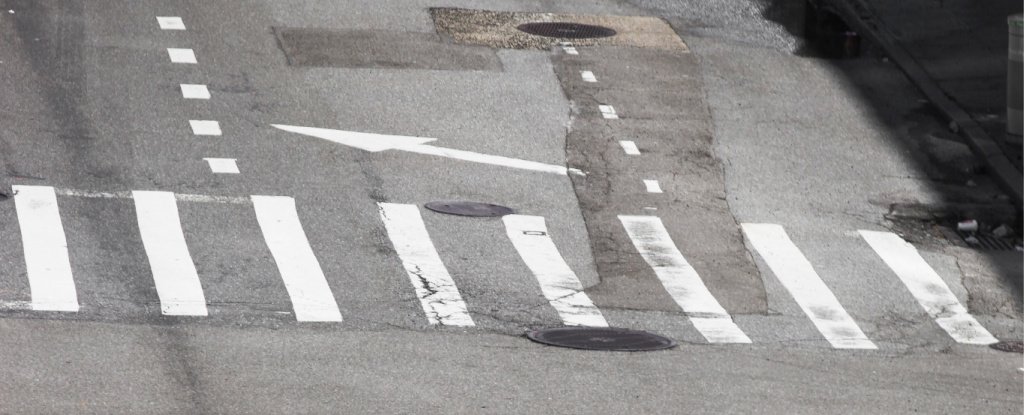Products You May Like
We might have a problem with our roads: researchers have discovered that sunlight and rain might be able to turn certain compounds in asphalt into a potentially dangerous hydrocarbons, threating the surrounding environment and people using these routes.
In particular, it’s the binder (also called asphalt cement) that’s the problem. This heavy, black glue is used to stick stones, sand, and gravel together in paved roads. It’s made from leftover crude oil at the very end of its distillation process.
While the leaking of toxic, carcinogenic polycyclic aromatic hydrocarbons (PAHs) from asphalt around roads and pavements has previously been investigated, up until now it hasn’t been considered to be enough of a problem to impact human health – something the researchers behind the new study wanted to investigate further.
“The long-term stability of petroleum-derived materials in the environment has always been a curiosity of mine,” says chemist Ryan Rodgers, from MagLab at Florida State University (FSU).
“Knowing their compositional and structural complexity, it seemed highly unlikely that they would be environmentally benign. How do silky-smooth, black roads turn into grey, rough roads? And where the heck did all the asphalt go?”
The team created an experiment where a film of asphalt binder was stuck to a glass side, before being submerged in water and exposed to a solar simulator for a week. A sample was kept in the dark for a week to provide a comparison.
Using an ultra-high resolution technique called Fourier transform ion cyclotron resonance mass spectrometry (FT-ICR MS), the researchers then analysed the water around both the irradiated sample and the control sample.
It appears that solar energy reacts with oxygen-containing compounds in the water to release potentially dangerous hydrocarbons from the binder. This process, known as photooxidation, also happens with oil slicks.
“We had this road sample and we shined fake sunlight on it in the presence of water,” says chemist Sydney Niles, from FSU.
“Then we looked at the water and we found that there are all these compounds that are derived from petroleum, and probably toxic. We also found that more compounds are leached over time.”
Roughly 25 times the amount of hydrocarbons leaked into the water in the main sample compared with the control, in fact, implying sunlight’s role in the molecule’s production. Importantly, the hydrocarbons also contained more than the usual number of oxygen atoms, helping the compound’s soluability.
In total, the irradiated sample ended up with more than 15,000 different carbon-containing molecules.
This isn’t yet proof that run-off from asphalt exposed to everyday weather is poisonous, but given the general toxicity and carcinogenic nature of PAHs like these, the reactions are definitely cause for concern.
The next stage is to investigate the chemical reactions more closely to see how the compounds are transforming, and to establish to what extent asphalt binder is generating water–soluble contaminants.
“Hopefully it’s motivation for a solution,” says Niles. “I hope that engineers can use this information to find a better alternative, whether it’s a sealant you put on the asphalt to protect it or finding something else to use to pave roads.”
The research has been published in Environmental Science & Technology.
